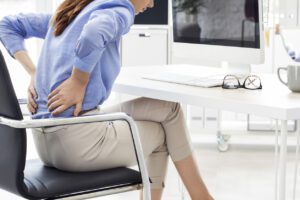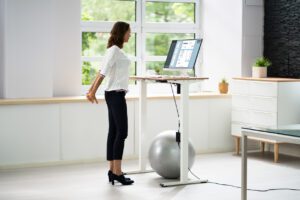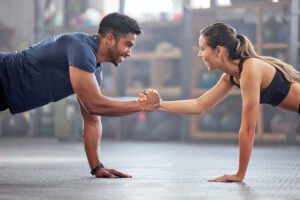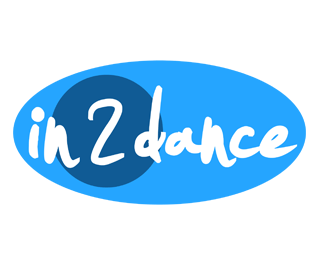Posture Practice
May 1, 2023You know the drill … it is post Covid, and that aching back pain won’t subside. Your doctor, co-worker, your spouse, all of them suggests, “Stand up straight!” and “Don’t slouch in your chair!” As time passes by, the back pain starts to travel and affect your hips or low back. Suddenly, you start to feel your neck aching. All of these triggers are signals that you should practice your posture.
start to feel your neck aching. All of these triggers are signals that you should practice your posture.
Many of us have suffered from some sort of back pain or discomfort. Many of these cases can be avoided by simply being conscious of how we are sitting and standing. While sitting, the most preventative method is to have a seat that fits your body. This holds especially true when sitting for long periods of time. Proper position includes one’s back being pushed completely against the back support with knees bent at a 90-degree angle and feet flat on the floor. Most office chairs are adjustable, but if this is not the case, a booster or foot support may be used for proper positioning. Another important thing to remember is to take breaks periodically.
If you have a job that requires sitting at a desk or if you are simply surfing the web, take a break every 15 minutes. Set a reminder to move. If you have a standing desk, incorporate that and move up and down. During this short break stand up and perform simple stretching activities which will keep the blood flowing and relieve tension in the neck and back muscles. The ergonomic wave has also hit office design to include adjustable desks to work while standing. Taking that literally a step further, there are treadmill desks on the market, as well.

While standing, be aware of your shoulders. Keeping the shoulders back and head up will help ensure proper neck and back alignment. Another key is to keep your shoulder relaxed. If you feel like your shoulders are high and near your ears, drop them! Again, making a conscious effort to do this will promote good posture. One effective way to correct posture includes the following steps:
- Stand with hands at sides.
- Slowly lift the backs of your hands and try to touch them to the corresponding shoulders.
- Keep shoulders in this position when returning hands to sides This motion forces the shoulders back for proper alignment.
Another very important aspect of correct posture is maintaining muscle strength in the torso. The upper back, low back, and abdominal muscles are all important in maintaining an upright and aligned position. The low back and abdominal muscles are used constantly to simply sustain an upright position. Without these muscles maintaining constant contractions, you would resemble a wet noodle and slouch over. Upper back muscle strength is important to keep the shoulders back and head up to maintain alignment. There are a wide variety of exercises that will strengthen your posture muscles. Adding them to your routine, as well as maintaining a general sense of awareness while sitting and standing, can keep you straightened up.

These are all tips to correct your posture in real-time; however, strengthening these muscles will help. When your muscles are strong, they will be more aware of improper positions and create a bigger feedback system for you. This is due to the larger recruitment of muscle fibers. If you need extra guidance in your fitness journey, please reach out to KB Fitness Solutions. Our team of certified fitness professionals will be glad to help you achieve what you are meant to achieve!





